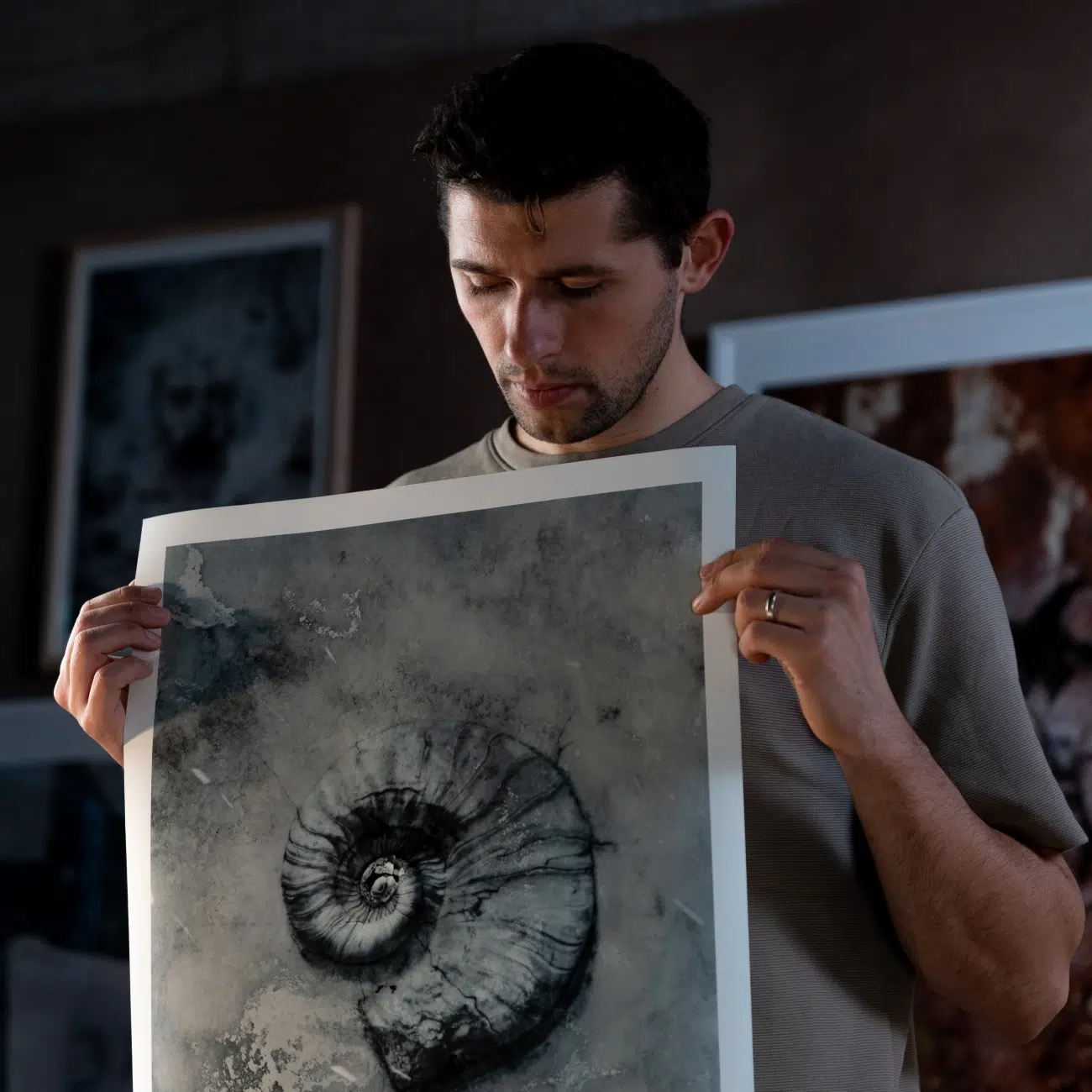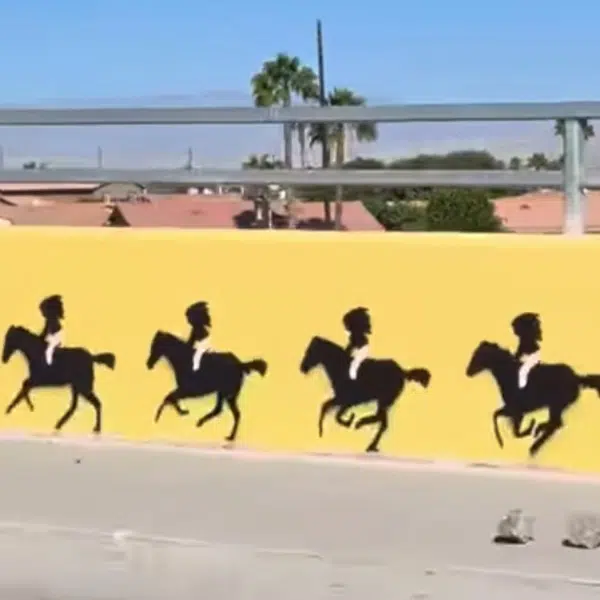
Artist David Popa is known for his extraordinary earth murals. Using natural materials, he creates stunning ephemeral pieces that slowly blend back into the Earth. For one of his latest projects, he was inspired by nature itself, specifically the spiral form of ammonites.
These prehistoric shelled cephalopods died out about 66 million years ago, but their fossils can be found around the world. Their unique shape, which echoes the golden ratio, spoke to Popa, and when he saw a section of ice with a protruding rock in southern Finland, he knew that he's come upon the perfect canvas.
Created using charcoal and water, Ammonite is a stunning piece that Popa shows off through well-executed videos and photography. He then transformed the piece into a limited-edition print that captures the spirit of the original. We had the chance to speak with Popa about Ammonite and his philosophy about creating ephemeral art. Scroll down to read My Modern Met's exclusive interview.
View this post on Instagram
What attracted you to the form of ammonites?
Ammonites have always fascinated me. They’re these fossilized spirals—remnants of creatures that lived millions of years ago—and to me, they embody time itself. There’s something poetic about their form: cyclical, eternal, and yet fragile. They remind us that life leaves traces, even after it’s gone. In a way, ammonites are nature’s art, capturing the passage of time in a single, beautiful form. That idea felt deeply connected to the themes I explore in my work.

Can you tell us a bit about how you scout your locations?
Scouting locations is about searching for resonance—finding places where the landscape feels like an extension of the piece I want to create. In this case, I was working on the Baltic Sea, only about 20 minutes from my house. My process was quite simple: I headed out with my drone. I found this incredible spot where rock formations were cracking and protruding through the ice, almost as if they were pushing their way out of the surface. I knew immediately that this would be the center of the piece, a place for the ammonite to spiral out of—as if being birthed from the earth itself.
Given the shifts in weather, do you have to start creating immediately after finding your location, or is there flexibility?
When working specifically on the ice, I have to start almost immediately. The conditions can change drastically from one day to the next, whether it’s temperature, wind, or shifting ice. If I find a location that resonates, I begin working right away—because I know that it might not look the same even a few hours later.
View this post on Instagram
How long did the piece take to execute, and what type of materials did you use in order to be sensitive to the environment?
The Ammonite piece took about a day to create. I work quickly due to the scale and the unpredictability of the environment. For materials, I use natural pigments—chalk, charcoal, and earth pigments—that are completely non-toxic and biodegradable. They blend back into the land over time without leaving a trace, which is important to me.
Many art lovers take the permanence of art very seriously. Museums go to great lengths to ensure the permanence of works, and artists are often told they must ensure their work lasts over time. Your work is quite the opposite. What is it about working with impermanence that speaks to you?
Impermanence feels honest. Life is fleeting, fragile, and constantly changing. Why should art be any different? Working with impermanence forces both me and the viewer to be present—to appreciate the work while it’s there, knowing that it won’t last forever. It’s a reminder of the beauty in letting go, in the cycles of creation and disappearance. The earth takes the work back, and in that, there’s a kind of poetic completion.

What is your favorite part of the creative process? Is it the execution or watching the evolution after the fact?
My favorite part of the creative process is when I’m out at the location, working in the context of nature. I generally don’t reference my drone very often, so when I pull it up for the first time and see the work from above, it’s always such a surprise. The way nature interacts with the piece is something I could never have predicted. Sometimes, the surprise works in the opposite way—the piece doesn’t look as good as I imagined. But that element of not knowing what the end result will be keeps me coming back for more.
View this post on Instagram
What do you hope that people take away from this piece in particular?
I hope Ammonite gives people a moment of reflection. It’s about connecting with something bigger than ourselves—nature, time, and the beauty of what’s been left behind. I want viewers to feel a sense of awe at how the earth carries its history and to reflect on their own place in that cycle.
What’s next?
I don’t generally know what’s next, and I think that’s part of the journey. That said, I’d like to spend more time creating fuller, longer films about the entire adventure of my work—capturing not just the art, but the entire process of being out in nature and creating. I hope to focus on that in 2025, along with any future brand or public art projects that come my way.






















































































